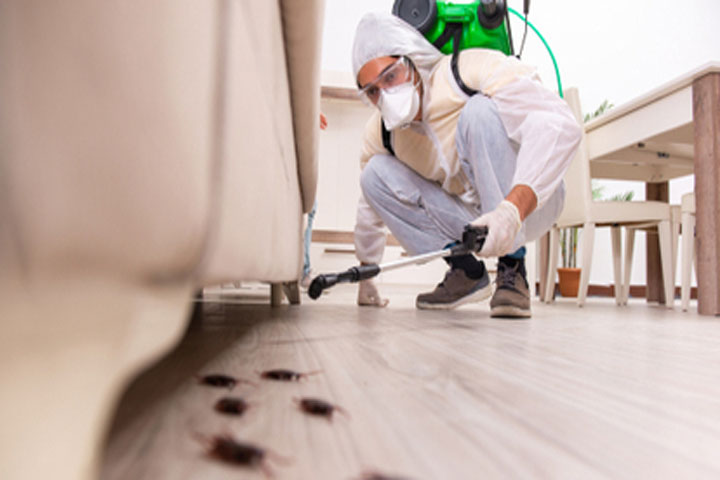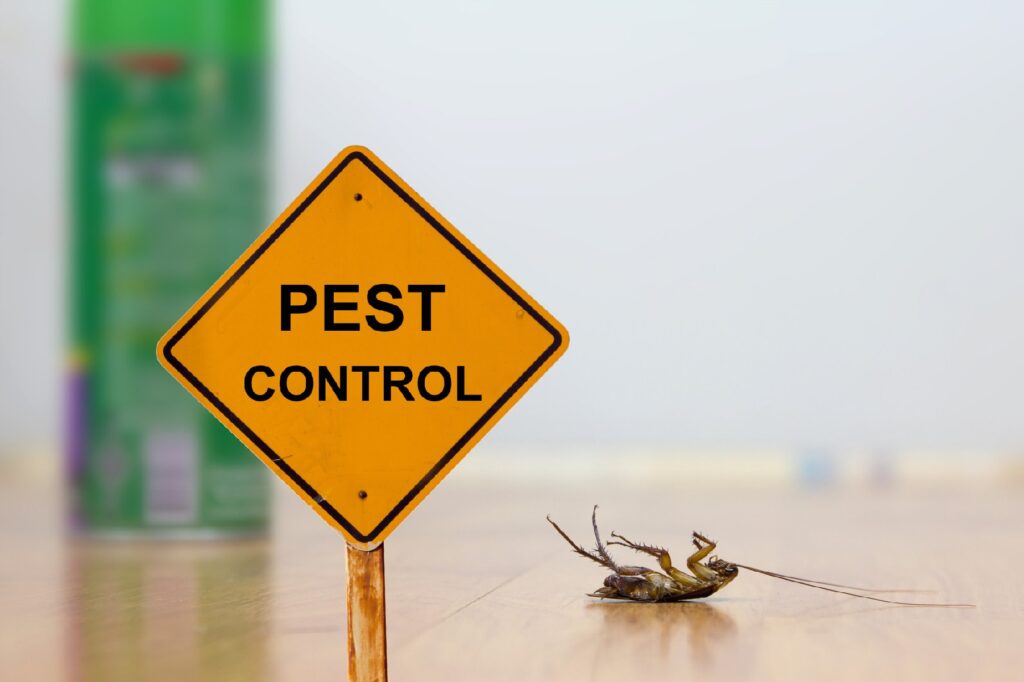A Comprehensive Guide to the Different Sorts Of Bug Control Approaches
Parasite control is a crucial facet of preserving a healthy and habitable atmosphere, whether it's in our homes, yards, or workplaces. With the myriad of bug control techniques available, it can be frustrating to find one of the most effective remedy for a certain insect trouble. From chemical and organic methods to physical and all-natural alternatives, each strategy has its own one-of-a-kind staminas and limitations. In this detailed guide, we will certainly explore these various kinds of parasite control approaches, offering understandings into their applications and benefits. By the end, you will certainly have a clearer understanding of which technique might be the very best suitable for your insect control demands. Allow's dive right into the interesting globe of parasite control and uncover the secrets to a pest-free setting.
Chemical Bug Control Methods

One common type of chemical insect control is insecticides. Pesticides target certain parasites, such as insects, termites, or ants, and can be made use of both inside and outdoors.
One more type of chemical parasite control is rodenticides. These are chemical compounds developed to regulate populations of rats, such as rats and mice.
Weed awesomes, also called herbicides, are another kind of chemical insect control approach. Herbicides are developed to selectively eliminate unwanted plants, referred to as weeds, without triggering damage to preferable plants. They are typically made use of in agriculture, landscaping, and gardening to regulate the development of unwanted plants.
While chemical pest control techniques can be very reliable in eliminating parasites, it is necessary to utilize them sensibly and follow safety and security guidelines. Overuse or abuse of chemical pesticides can have unfavorable effect on human wellness and the environment. Therefore, it is critical to utilize these methods properly and consider different insect control strategies whenever possible.
Organic Pest Control Techniques
Organic bug control methods include the usage of living microorganisms or all-natural compounds to handle and manage pest populaces. Unlike chemical approaches, which commonly rely on synthetic chemicals, organic control techniques make use of the all-natural adversaries of pests to regulate their populaces. This strategy is thought about even more eco-friendly and sustainable, as it decreases the usage of dangerous chemicals and reduces the threat of chemical resistance.
One commonly used organic parasite control technique is the intro of all-natural killers or bloodsuckers. Ladybugs are introduced to control aphids, while certain wasp types are released to target caterpillars. These predators and bloodsuckers eat bugs, minimizing their numbers and stopping problems.
One more biological control approach is the use of virus. Certain germs, infections, and fungi can be utilized to infect and kill particular insects. The germs Bacillus thuringiensis is commonly utilized to regulate caterpillars, as it creates contaminants that are dangerous to these parasites.
Biological control approaches can also include using pheromones or all-natural compounds that interfere with the mating patterns of parasites. By interfering with their recreation, these techniques help to reduce pest populations over time.
While organic bug control techniques are typically effective, they may need longer durations to accomplish wanted results contrasted to chemical methods. Furthermore, mindful consideration needs to be provided to the selection and release of natural adversaries to avoid unplanned injury to helpful microorganisms or communities.
Physical Bug Control Approaches
To effectively take care of and control pest populaces, alternative pest control approaches referred to as physical bug control approaches are used. These methods involve the use of physical barriers, traps, or gadgets to stop bugs from accessing or damaging property. One common physical pest control method is making use of screens or nets to keep insects out of structures or yards. These displays are generally made from fine mesh product that enables air flow while protecting against insects from going More Bonuses into. An additional physical pest control approach is the setup of fencings or wall surfaces to maintain larger insects, such as deer or bunnies, out of gardens or farming fields. These barriers physically block the pests' accessibility to the location, minimizing the possibility for damages. Furthermore, traps and devices can be used to capture or fend off insects. Sticky catches can be put in areas where pests are an issue, and the insects come to be stuck to the sticky surface. Ultrasonic devices can also be made use of to emit high-frequency audios that are undesirable to bugs, causing them to leave the area. Physical parasite control approaches are an eco-friendly choice to chemical pesticides, as they do not depend on making use of damaging chemicals.
Natural Parasite Control Approaches
All-natural insect control methods offer a sustainable and green strategy to handling and getting rid of parasites. These approaches prioritize making use of all-natural substances and biological agents, reducing the demand for chemical pesticides that can hurt the atmosphere and human health and wellness. One of one of the most usual all-natural insect control techniques is biological control. This includes introducing all-natural killers or bloodsuckers to take advantage of or parasitize the pests. Ladybugs are frequently presented to gardens to manage aphid populations. Another all-natural technique is making use of repellents originated from plants. Certain plants, such as marigolds, lavender, and pepper mint, give off scents that drive away bugs like mosquitoes, flies, and ants. In addition, social control techniques can be utilized to stop and manage parasite invasions. This consists of appropriate sanitation, routine upkeep, and promoting biodiversity in the garden. For example, rotating crops, removing yard particles, and motivating all-natural predators can help avoid the buildup of pests. By adopting these all-natural insect control methods, people and neighborhoods can effectively handle insects while reducing the negative effect on the environment and human wellness.
Integrated Insect Management (IPM)
Integrated Pest Administration (IPM) is a detailed and systematic method to pest control that combines different approaches and techniques to efficiently handle parasites while minimizing the use of chemical pesticides. IPM aims to preserve bug populaces listed below the financial injury degree by utilizing a combination of cultural, biological, and chemical control techniques.
Social control approaches involve customizing the setting to make it less favorable for go to website bugs. This can include techniques such as crop rotation, proper sanitation, and using immune plant ranges. By developing undesirable conditions for parasites, cultural control techniques can considerably minimize bug populaces.

Chemical control approaches are used as a last hotel in IPM. They Continue include the targeted and cautious usage of pesticides to take care of parasite populations. Unlike standard bug control methods, IPM intends to reduce using chemical pesticides by using alternative approaches.
Integrated Insect Monitoring (IPM) is a positive approach that concentrates on long-term insect monitoring as opposed to counting entirely on responsive steps. By incorporating multiple control techniques, IPM gives a much more lasting and eco-friendly approach to pest control.
Final Thought
Finally, this short article has actually provided a detailed overview of the different kinds of pest control techniques. It discussed chemical, organic, physical, and all-natural pest control approaches, along with the integrated bug monitoring approach. By comprehending these numerous methods, individuals can make educated decisions on which insect control method is most suitable for their details requirements and choices. Reliable parasite control is essential in preserving a healthy and pest-free atmosphere.